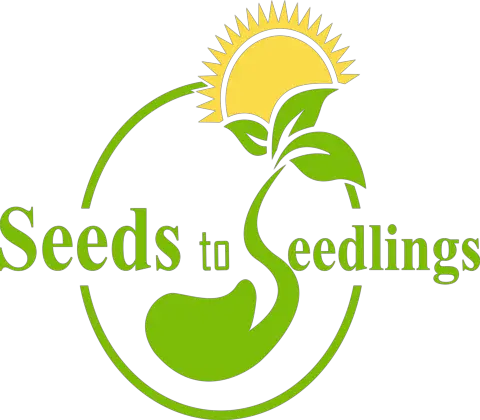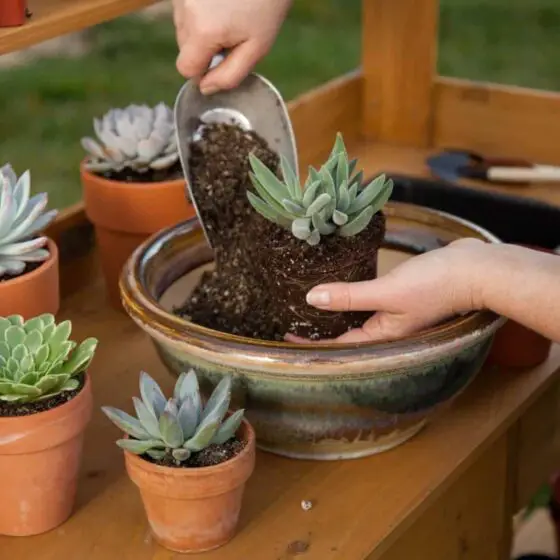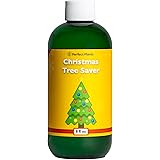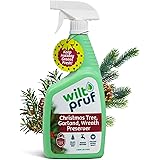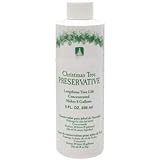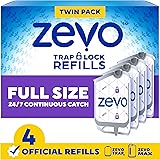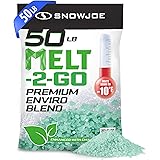Watering after repotting is a crucial step in ensuring the health and vitality of your plants. The answer to the question “Do you water after repotting?” is a resounding yes. After repotting, your plants are in a state of shock and need extra care and attention to settle into their new environment.
Providing them with a good watering immediately after repotting helps to promote root growth and establish the plant in its new home. In this article, we will delve deeper into the importance of watering after repotting and share some helpful tips to ensure your plants thrive. So, let’s get started!
Do You Water After Repotting?
Repotting plants is an essential part of their care routine, helping to ensure their health and well-being. But once you’ve gone through the process of repotting, you might be wondering if watering is necessary immediately afterward.
In this article, we’ll delve into the topic of whether or not you should water after repotting, providing you with insights and guidance to help your plants thrive.
The Importance of Watering in Plant Care
Before we dive into the question of watering after repotting, it’s crucial to understand the significance of watering in general for plants. Water is a vital resource that plants need for their growth, as it helps transport nutrients, regulates temperature, and maintains turgidity.
Without adequate hydration, plants can suffer from dehydration, leading to wilting, stunted growth, and even death.
Factors Influencing Watering After Repotting
The need for watering after repotting can vary depending on several factors, including the type of plant, soil composition, environmental conditions, and the overall health of the plant.
Let’s explore these factors in more detail:
Type of Plant
Different types of plants have varying water requirements. Some plants, such as succulents, prefer drier conditions and may not require immediate watering after repotting.
On the other hand, moisture-loving plants like ferns might benefit from a thorough watering right after being placed in a new pot. Understanding the specific needs of your plant is crucial when determining whether watering is necessary after repotting.
Soil Composition
The type of soil you use during repotting can influence the need for watering. Well-draining soils, such as those mixed with perlite or sand, allow excess water to flow out quickly, reducing the risk of waterlogging.
If you’ve used a well-draining soil mix during repotting, the plant may not require immediate watering. However, if you’ve opted for a denser or moisture-retaining soil, watering after repotting may be necessary.
Environmental Conditions
The current environmental conditions, such as temperature and humidity, play a crucial role in determining whether watering is needed after repotting. If you live in a hot and dry climate, your newly repotted plant may require more frequent watering to prevent drying out.
Conversely, in a cool and humid environment, the plant may not need immediate watering as the moisture levels are already higher.
Plant Health
The overall health of the plant can also influence the need for watering after repotting. If your plant was in a distressed or dehydrated state before repotting, providing water immediately afterward can help rejuvenate and rehydrate it.
However, if the plant was healthy prior to repotting, watering may not be necessary right away.
Guidelines for Watering After Repotting
While the factors mentioned above can provide a general idea of whether watering is needed after repotting, it’s crucial to follow some guidelines to ensure your plant’s well-being.
Here are some tips to help you determine when and how to water after repotting:
Observe the Plant
One of the best ways to gauge whether your plant needs water after repotting is by observing it closely. Check for signs of dehydration, such as wilting leaves or dry soil.
If the plant appears to be in distress or the soil is dry, it’s an indication that watering is necessary.
Watering Techniques
When watering after repotting, it’s important to use the right technique to ensure the water reaches the plant’s roots effectively. Here are a few techniques you can employ:
- Bottom Watering:
Place your newly potted plant in a basin or saucer filled with water and allow it to soak up the moisture from the bottom. This technique ensures the water reaches the roots directly without disrupting the soil.
- Slow and Deep Watering:
If you choose to water from the top, pour water slowly and evenly onto the soil, allowing it to soak in without causing compaction. This method promotes deep root growth.
- Misting:
For plants that prefer higher humidity, misting the leaves with water after repotting can help maintain moisture levels. However, avoid misting if the plant is prone to fungal diseases or if the environment is already humid.
Watering Frequency
The frequency of watering after repotting can vary based on the plant’s needs and environmental conditions. In general, it’s best to establish a watering routine based on the plant’s water requirements and monitor the soil moisture levels regularly. Avoid overwatering, as it can lead to root rot and other plant health issues.
The question of whether to water after repotting depends on various factors such as plant type, soil composition, environmental conditions, and plant health. Observing your plant’s condition, using appropriate watering techniques, and considering the specific needs of your plant will help you make an informed decision.
Remember, each plant is unique, so it’s essential to tailor your watering approach accordingly. Following these guidelines will ensure your newly repotted plants receive the necessary hydration to thrive and continue to beautify your space.
Frequently Asked Questions (FAQs)
After repotting, it is recommended to wait for a few days before watering the plant. This allows the roots to adjust and recover from the transplanting process.
However, it is essential to regularly check the moisture level of the soil to ensure it doesn’t become too dry.
The frequency of watering after repotting depends on various factors such as the type of plant, pot size, and environmental conditions.
It is best to monitor the moisture level of the soil and water only when it starts to dry out. Overwatering can lead to root rot, so it’s important to avoid excessive watering.
The amount of water required after repotting depends on the plant’s specific needs and the new pot’s size.
Generally, it is recommended to water until the excess water starts draining out from the drainage holes. This ensures that the roots receive enough hydration without causing waterlogged conditions.
It is best to avoid fertilizing immediately after repotting. The plant needs time to adjust to its new environment and focus on root development. Wait for a few weeks before considering the application of fertilizer.
When you eventually start fertilizing, follow the instructions provided on the fertilizer packaging and use it sparingly.
Misting the plant after repotting is not necessary unless it is a requirement for the specific type of plant. Most plants benefit more from watering at the base rather than misting the leaves.
However, if your plant prefers higher humidity levels, misting the leaves can help create a more favorable environment.
Overwatering after repotting can lead to several symptoms such as wilting, yellowing leaves, root rot, fungus gnats, and a foul odor.
If you notice any of these signs, it is crucial to adjust your watering routine and allow the plant to dry out before watering again.
Tap water can be used for watering after repotting, but it depends on the quality of your tap water. Some tap water contains chemicals like chlorine or fluoride, which can be harmful to certain plants.
If you have concerns about your tap water, you can use filtered or distilled water to avoid any potential issues.
If you accidentally overwater your plant after repotting, it is essential to take immediate action. Remove the plant from its pot, gently shake off excess soil, and inspect the roots for any signs of rot.
Trim away any damaged or mushy roots, allow the plant to dry out, and adjust your watering routine to prevent future overwatering incidents.
Final Thoughts
After repotting a plant, it is important to water it properly to ensure its healthy growth. Watering helps to settle the soil and eliminate any air pockets that may have formed during the repotting process. It also provides necessary hydration to the plant’s roots and helps them adjust to their new environment. When watering after repotting, it is essential to use the right amount of water without overwatering.
The plant’s specific watering needs should be considered, taking into account factors like the type of plant, size of the pot, and the environmental conditions. By watering appropriately after repotting, you can promote the plant’s vitality and support its successful acclimation to the new potting environment. So, do you water after repotting? Absolutely! Proper watering is crucial for the plant’s well-being and overall health.
Auto Amazon Links: No products found.
Perfect Plants Christmas Tree Saver 8oz. | Easy Use Xmas Tree Preserver Food | Have Healthy Green Christmas Trees All Holiday Season
$7.99 (as of December 26, 2025 06:42 GMT +00:00 - More info- Product prices and availability are accurate as of the date/time indicated and are subject to change. Any price and availability information displayed on [relevant Amazon Site(s), as applicable] at the time of purchase will apply to the purchase of this product.
FirEver Pure Christmas Tree Food | Preserver Additive & Season Extender for Live Xmas Trees | Keep It Green, Reduce Needle-Drop | Miracle Freshness (8 oz)
$9.16 (as of December 26, 2025 06:42 GMT +00:00 - More info- Product prices and availability are accurate as of the date/time indicated and are subject to change. Any price and availability information displayed on [relevant Amazon Site(s), as applicable] at the time of purchase will apply to the purchase of this product.
Wilt-Pruf® Christmas Tree/Cutting Preserver Spray |Preserves Christmas Trees, Wreaths, Garlands, Cuttings and Carved Pumpkins | Reduces Needle Drop | Keeps Cut Trees Fresh Longer | Natural (32 oz)
$21.99 (as of December 26, 2025 06:42 GMT +00:00 - More info- Product prices and availability are accurate as of the date/time indicated and are subject to change. Any price and availability information displayed on [relevant Amazon Site(s), as applicable] at the time of purchase will apply to the purchase of this product.
Transmission Funnel - 3'' Wide 23'' Long Funnel with Hose – Flexible, Reusable, No Leak Design Featuring Elastic Long Hose | Long Funnel for Oil, Gas, Coolant, Automotive and Garage Applications
$7.95 (as of December 26, 2025 06:42 GMT +00:00 - More info- Product prices and availability are accurate as of the date/time indicated and are subject to change. Any price and availability information displayed on [relevant Amazon Site(s), as applicable] at the time of purchase will apply to the purchase of this product.
Rocky Mountain Goods Christmas Tree Food - 8 oz Tree Preservative - Reduce Needle Drop - Greener Scent - Fir, Pine, Spruce Trees - Extend Tree Life
$9.95 (as of December 26, 2025 06:42 GMT +00:00 - More info- Product prices and availability are accurate as of the date/time indicated and are subject to change. Any price and availability information displayed on [relevant Amazon Site(s), as applicable] at the time of purchase will apply to the purchase of this product.
Muddy Mat® | Super Absorbent Door Mat Indoor, Microfiber Quick Dry Chenille Entryway Rug, Non-Slip Front Door Mat, Indoor Mats for Entryway, Machine Washable Pet Rug, Grey 30"x19"
$24.95 (as of December 26, 2025 13:27 GMT +00:00 - More info- Product prices and availability are accurate as of the date/time indicated and are subject to change. Any price and availability information displayed on [relevant Amazon Site(s), as applicable] at the time of purchase will apply to the purchase of this product.
Zevo Flying Insect Trap Official Refill Cartridges - Fits Both Zevo Trap & MAX Indoor Fly Trap - Authentic Trap+Lock Technology to Catch Gnats, House & Fruit Flys (4 Official Refill Cartridges)
$14.97 (as of December 26, 2025 13:27 GMT +00:00 - More info- Product prices and availability are accurate as of the date/time indicated and are subject to change. Any price and availability information displayed on [relevant Amazon Site(s), as applicable] at the time of purchase will apply to the purchase of this product.
OLANLY Dog Door Mat for Muddy Paws 30x20, Absorbs Moisture and Dirt, Absorbent Non-Slip Washable Doormat, Quick Dry Chenille Mud Mat for Dogs, Entry Indoor Entryway Carpet for Inside Floor, Grey
$9.99 (as of December 26, 2025 13:27 GMT +00:00 - More info- Product prices and availability are accurate as of the date/time indicated and are subject to change. Any price and availability information displayed on [relevant Amazon Site(s), as applicable] at the time of purchase will apply to the purchase of this product.
TERRO Ant Killer Bait Stations T300B - Liquid Bait to Eliminate Ants - Bait System - 12 Count Stations for Effective Indoor Ant Control
$10.88 (as of December 26, 2025 13:27 GMT +00:00 - More info- Product prices and availability are accurate as of the date/time indicated and are subject to change. Any price and availability information displayed on [relevant Amazon Site(s), as applicable] at the time of purchase will apply to the purchase of this product.
Snow Joe Premium Enviro Blend Ice Melt, Green-Coated Deicer Crystals, 50 lb - Safer Melter for Vegetation, Concrete & Metals w/ Anti-Corrosion Calcium Magnesium Acetate
$32.97 (as of December 26, 2025 13:27 GMT +00:00 - More info- Product prices and availability are accurate as of the date/time indicated and are subject to change. Any price and availability information displayed on [relevant Amazon Site(s), as applicable] at the time of purchase will apply to the purchase of this product.
